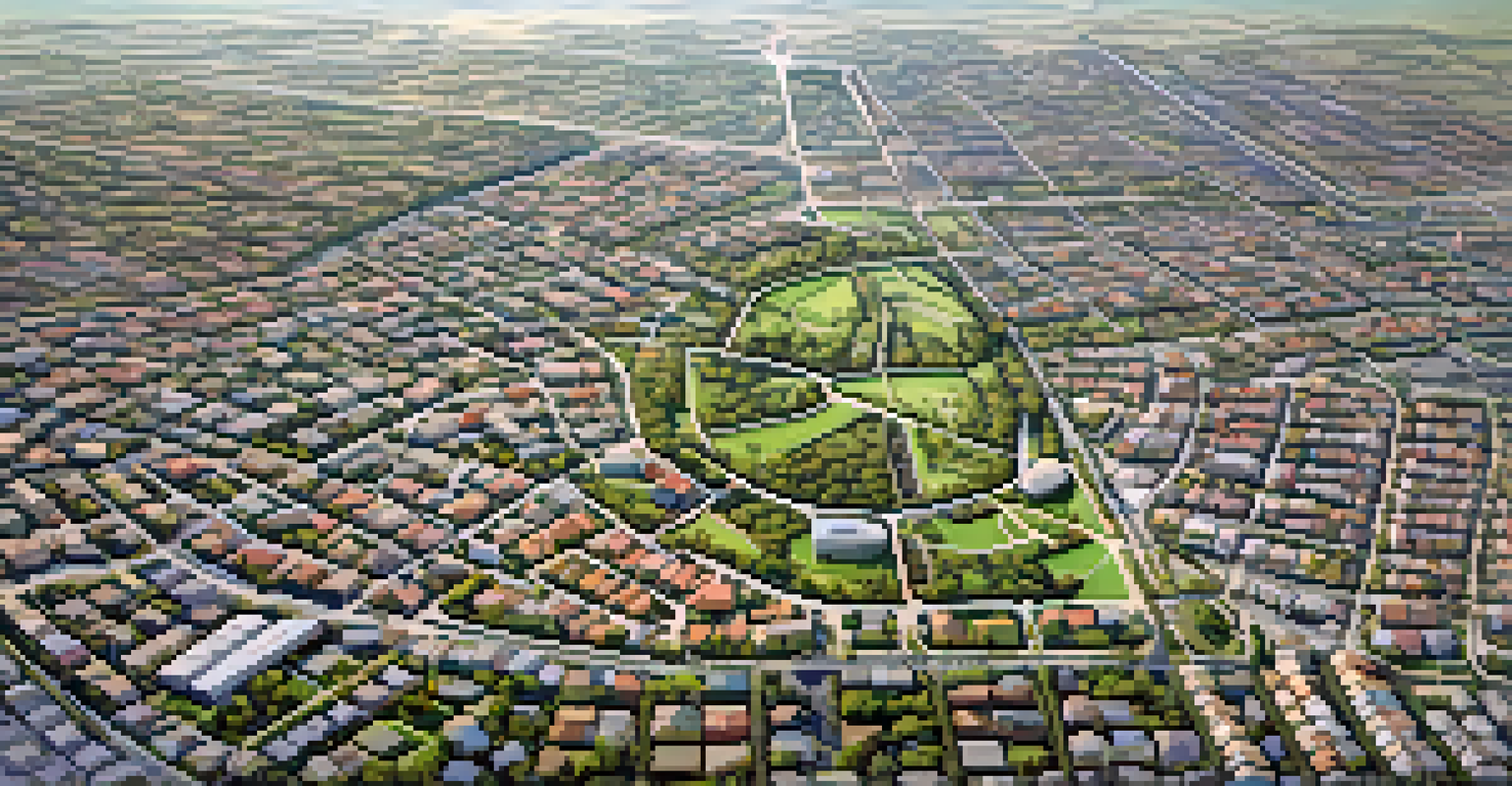Evaluating Health Disparities in San Jose Due to Pollution

Understanding Health Disparities in San Jose
Health disparities refer to the differences in health outcomes among different populations. In San Jose, these disparities can often be linked to socioeconomic status, race, and environmental factors. For instance, low-income communities may face higher exposure to pollution due to their proximity to industrial areas, leading to poorer health outcomes.
Environmental injustice is not just a social issue; it’s a health crisis that impacts the most vulnerable among us.
These disparities are not just statistics; they impact real lives. Families in affected neighborhoods often experience higher instances of respiratory issues, cardiovascular diseases, and other pollution-related health problems. It's crucial to understand who is affected and why, as this knowledge can drive effective interventions.
By evaluating health disparities, we can identify specific communities that require more support. This understanding serves as the foundation for addressing the root causes of these issues, creating a focal point for local health initiatives and policies aimed at reducing inequalities.
Sources of Pollution in San Jose
San Jose, like many urban areas, grapples with various pollution sources that contribute to health disparities. Major contributors include vehicle emissions, industrial discharges, and construction activities. Each of these sources releases harmful pollutants into the air, which can have severe health implications, particularly for vulnerable populations.

For example, areas near highways often experience elevated levels of particulate matter, which can exacerbate asthma and other respiratory conditions. Communities located close to factories may also be subjected to toxic emissions that pose additional health risks. Understanding these pollution sources is vital for addressing the health impacts they cause.
Health Disparities in San Jose
Socioeconomic status, race, and environmental factors contribute to significant health disparities in San Jose, affecting vulnerable populations.
Local environmental agencies and organizations play a key role in monitoring these pollution sources. By gathering data and reporting findings, they provide the information necessary for both the public and policymakers to take action against pollution and its health effects.
The Impact of Air Pollution on Health
Air pollution is one of the most significant environmental health risks in San Jose. Exposure to pollutants such as ozone and particulate matter can lead to a variety of health issues, including respiratory diseases, cardiovascular problems, and even premature death. Vulnerable groups, including children and the elderly, are particularly at risk.
The greatest threat to our planet is the belief that someone else will save it.
For instance, children exposed to high levels of air pollution may experience developmental issues and increased rates of asthma. On the other hand, older adults with pre-existing health conditions face heightened risks when air quality deteriorates. This highlights the need for targeted health interventions in areas most affected by pollution.
Moreover, the psychological impact of living in polluted areas cannot be overlooked. Residents may experience anxiety and stress due to their health concerns, further complicating their overall well-being. Addressing both physical and mental health impacts is crucial for improving the quality of life in affected communities.
Identifying Affected Communities
To effectively address health disparities, it's essential to identify the communities most affected by pollution. In San Jose, neighborhoods with a high percentage of low-income residents and people of color often bear the brunt of environmental injustices. Mapping these areas helps visualize the correlation between pollution exposure and health outcomes.
Community organizations and local health departments can use this data to prioritize resources and support where they are needed most. For example, targeted outreach programs can be established to educate residents about the health risks associated with pollution and preventive measures they can take.
Pollution Sources Impact Health
Vehicle emissions, industrial discharges, and construction activities are major pollution sources in San Jose that exacerbate health issues.
Additionally, engaging with these communities ensures that their voices are heard in policy discussions. By including residents in the decision-making process, initiatives can be more effectively tailored to meet their specific needs and concerns, fostering a sense of ownership and empowerment.
Policy Initiatives Addressing Pollution
In response to the growing awareness of pollution-related health disparities, various policy initiatives have emerged in San Jose. Local government and environmental groups are working together to implement stricter regulations on emissions and promote sustainable practices. This collaborative approach is crucial for making substantial changes.
For instance, initiatives aimed at increasing green spaces can help mitigate the effects of pollution. Trees and plants not only improve air quality but also provide residents with a healthier living environment. Policies that incentivize clean transportation options, such as public transit and electric vehicles, can also significantly reduce pollution levels.
Community involvement plays a key role in the success of these initiatives. When residents advocate for policies that prioritize their health, it not only raises awareness but also pressures local leaders to take action. This collective effort is vital for creating lasting change in the fight against pollution-related health disparities.
Community Engagement and Education
Educating communities about the health risks associated with pollution is a critical step in addressing disparities. Engaging residents through workshops, seminars, and informational campaigns can empower them to take proactive measures. By providing resources and knowledge, communities can better protect themselves and advocate for their health.
Local organizations often lead the charge in this educational effort. They can share information about air quality monitoring, health risks, and preventive strategies with residents. For example, teaching families how to reduce indoor pollution can have immediate benefits for their health and well-being.
Community Engagement is Crucial
Empowering residents through education and community involvement is essential for addressing health disparities and advocating for cleaner air.
Moreover, fostering a sense of community solidarity can enhance these efforts. When residents come together to learn and share their experiences, they create a supportive network that can amplify their voices in advocating for cleaner air and better health outcomes.
The Path Forward: Strategies for Change
As San Jose confronts the challenges of pollution-related health disparities, a multi-faceted approach is essential. Combining policy changes, community engagement, and education can create a comprehensive strategy that addresses both the symptoms and root causes of these disparities. It’s not just about reducing pollution but also improving health outcomes for all residents.
Collaboration between government agencies, local organizations, and community members will be key. By working together, these groups can develop and implement innovative solutions tailored to the unique needs of affected communities. This includes advocating for policies that prioritize environmental justice and health equity.

Ultimately, the goal is to create a healthier, more equitable San Jose where all residents can thrive. By addressing pollution and its impacts on health, we can pave the way for a brighter future for generations to come.